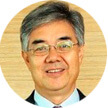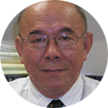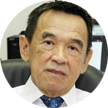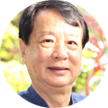
Professor Baaquie joined the Department in 1984 as a Senior Lecturer and retired as Professor on 30 June 2016.
Although his specialization is quantum field theory, Professor Baaquie has varied and multifaceted research interests. He has an abiding interest in the foundations of quantum mechanics, on which he has written a monograph; he has applied the mathematics of quantum field theory to such diverse subjects as finance, microeconomics and the modeling of human consciousness. He was actively involved in developing undergraduate pedagogy and has written two undergraduate science textbooks for non-specialists.
He is one of the pioneers in applying the quantum approach to mathematical finance and has written two books and many papers on this subject. Prof Baaquie has also proposed a statistical formulation of microeconomics that includes the theory of commodity prices, and which has been empirically tested with good results.
After retiring from NUS Prof Baaquie is taking up the position of Professor of Finance at INCEIF, The Global University of Islamic Finance, Malaysia.

Professor Englert is currently a research professor at the Department of Physics, National University of Singapore, and Principal Investigator at the Centre for Quantum Technologies.
In 2006, he was recognized for outstanding contributions to theoretical research on quantum coherence. His principal research interests concern applications in quantum information science, but he is also known for his early work on quantum optics together with Marlan Scully at Texas A&M University.
Englert was American Physical Society Outstanding Referee in 2008, and is the Scientific Secretary of the Julian Schwinger Foundation.
Englert is the author of more than 160 publications in the fields of atomic, molecular and optical physics.
He published Symbolism of Atomic Measurements by Julian Schwinger (Springer Publishing, 2001, ISBN 978-3-540-41408-7) which is authoritative in the field of quantum mechanics.
An important message Prof Englert has for our Physics graduates is to keep curiosity alive and getting the next generation interested in science. To him, nothing beats the joy of making a real scientific discovery. But much more frequently he is rewarded by observing a student turning from an immature teenager into a serious person; the occupation with science of which surely played a part in this transition.
An omnivorous reader, Prof Englert enjoys chess too.

Prof Feng Yuan Ping has been a faculty member of Department of Physics at the National University of Singapore (NUS) since 1990. He joined NUS following a 3 year postdoctoral stint at Purdue University.
He was the Head of Physics Department from Apr 2008 to Jun 2014 after being its Acting Head (Apr 07 – Mar 08) and Deputy Head (Feb 2005 – Mar 07).
He was a recipient of various honours including Academician, Asia Pacific Academy of Materials (since 2013), Fellow of American Physical Society (since 2012), Fellow of the Institute of Physics, Singapore (since 2007) and awards including Institute of Physics Singapore President’s Medal (2017), C N Yang Award in Science and Technology for New Immigrant (Singapore) – An Outstanding Contribution Award by Huayuan Association (2013), NUS Excellent Teacher Award AY 2003/2004, Faculty of Science Teaching Honour Roll AY2006/2007, Faculty of Science Teaching Excellence Award (AY2000/01, AY2003/04, AY2004/05, AY2005/06).
His research interest is in computational condensed matter & materials physics, focusing mainly on the understanding of fundamental properties of materials for advanced technologies, and prediction of new materials based on ab initio electronic structure calculations and materials genomic approach. Over the years, his group has studied various materials including structures, properties and applications of two-dimensional materials, dilute magnetic semiconductors, graphene spintronics, topological insulators, high-k materials, semiconductor and metal surfaces and interfaces, materials for magnetic data storage, etc. He has an established track record in collaboration with experimentalists. He has authored/co-authored close to 600 scientific papers in international refereed journals and one book.

Prof Kuok joined the Physics Department as a lecturer in 1979 and retired as a professor in 2017.
He has served as Honorary Secretary and Treasurer of the Institute of Physics, Singapore (IPS), and has organized IPS competitions, such as “Physics on Video”, for junior college students. He has acted as Deputy Head for seven years, and has been coordinator of the Levels 2000 and 3000 Physics Teaching Laboratories. Together with A/Prof Lim Hock Siah, he co-supervised Dr. Di Kai, the department’s first recipient of the Science Faculty’s “Top Graduate Researcher Award”.
Research-wise, he set up the first Raman scattering laboratory in Singapore and among the firsts achieved by his Laser Brillouin Spectroscopy group are:
- Mapping the magnon dispersion relation of multicomponent magnonic crystals. (Highlighted as “Magnonic Spin-offs” in Nature Materials, 2009).
- Direct observation of the interfacial Dzyaloshinskii-Moriya interaction.
- Observation of acoustic-wave and spin-wave quantizations in nanostructures. [Experiment on nanospheres verified the 1882 Horace Lamb theory, and was highlighted as “Music of the Spheres” in Physical Review Focus (American Physical Society), 2003].
- Design and study of nanostructures with simultaneous magnonic and phononic bandgaps. Coined the term “magphonic” crystals to classify these metamaterials.
- Work on Néel skyrmion eigenmodes highlighted as “The Synchronized Dance of Skyrmion Spins” by the American Institute of Physics and Newswise, 2017.
Books co-edited by Prof Kuok include “Optical Systems in Adverse Environments” SPIE – The International Society for Optical Engineering, 1991, and “Trends in Science Education, Singapore” – Singapore National Academy of Science, 1989. He received the 2008 IPS Nanotechnology Omicron Award.
After retirement, he has more time to dabble in the equity and (maybe) cryptos markets.

From a lecturer, then senior lecturer, associate professor and professor in the Department of Physics, National University of Singapore (NUS), Prof Lai Choy Heng’s enormous contributions to the department, faculty and NUS through his decades of dedication in teaching, research and administration is recognised with his conferment of Emeritus Professorship on 24 June 2022.
Between 1994 and 1997, Prof Lai was the Chairman of the Computational Science Program, and later the first Head of the Department of Computational Science. He was also a Vice-Dean in the Faculty of Science, taking care of various research activities and coordination, as well as the graduate study matters during 1996-2000. He held the position as the Dean of the Faculty of Science from July 2000 until June 2003, Vice-Provost (Academic Personnel) of NUS, July 2003 to April 2012, and Executive Vice-President (Academic Affairs), Yale-NUS College, May 2012 to July 2014. He is currently the Deputy Director of the Centre for Quantum Technologies.
Prof Lai has been instrumental in the establishment of the Centre for Quantum Technologies from its very beginning. A teacher, mentor, colleague and master administrator, he is someone to look to in policy formulation and his framework of administrative procedures has also become the templates for other Research Centres of Excellence in NUS.
Prof Lai played a major role in advancing the interests in various fields in physics especially in the application of computational science and the developments of nonlinear dynamics and quantum information science. There was unparalleled stability amidst expansion of the faculty under his leadership. The standards that NUS has maintained could be directly attributed to his judgement. With his calm and mature character and having a stringent standard of morality, Prof Lai is one of the beacons within NUS that others would do well to emulate.
In his appointment to various administrative roles, Prof Lai faced multiple huge challenges ranging from scarcity of resources, revamp of curriculum, merger of departments to faculty recruitment and tenure. Setting up expectations as well as assessment bases and criteria were never a trivial matter. Being committed to give his best, Prof Lai derived tremendous satisfaction seeing colleagues becoming solid and positive about their work.
Indeed all who have interacted with Prof Lai will be drawn to his wealth of knowledge and experience as well as his open-mindedness. An academician with broad research interests who can strike conversation on any diverse topics from music to politics and an administrative trailblazer, Prof Lai’s exemplary diligence will always be an inspiration to his colleagues and students.
It is an honour to have Prof Lai continue to serve the University, especially the Department of Physics as one of its emeritus professors.

Prof Lim joined the Physics Department as a senior lecturer in 1983 and retired as Emeritus Professor in 2018.
Prof Lim was presented the Emeritus Professorship award by Prof Ho Teck Hua, Senior Deputy President and Provost at a tea reception organised by the Department of Physics on 25 June 2018.
Prof Lim was a recipient of multiple awards including the World Meteorological Organisation Young Scientist Award, Award for Outstanding Contribution to the MINDEF-NUS Joint R&D Cooperation Programme, The Institute of Physics Singapore President’s Award, Best Lecturer Award, and the Outstanding Alumni of the Faculty of Science Award.
Prof Lim Hock has been instrumental in many developments in Science and beyond, in Singapore. The following is a summary of some of Prof Lim’s distinctive contributions throughout his career.
- Centre for Remote Imaging, Sensing and Processing (CRISP)
- Temasek Laboratories
- Singapore Nuclear Research and Safety Initiative
- setting up of the Computational Science Programme

Professor Ng joined the Department of Physics as an Associate Professor in 1969 and retired as Professorial Fellow on 31 December 2005.
Prof Ng was Head of the Department of Physics, Nanyang University, from 1971 to 1974. He was the first Head of the Department of Materials Science from 1996 to 1998, which started as a joint program of the departments of Physics and Chemistry. It was transferred to the Faculty of Engineering in 2005.
Prof Ng initiated the Brillouin light scattering research in 1984. Since then the research has covered a wide range of physical phenomena and material systems. These include sol-gel transition, glass transition, ferroelectric and ferroelastic phase transitions, elastodynamics of gels, quantization of spin waves in nanowires and nanorings, quantization of acoustic waves in nanospheres and nanocubes, spin dynamics of magnonic crystals and acoustic dynamics of phononic crystals, and asymmetric spin waves in films with interfacial Dzyaloshinskii-Moriya interactions.

Prof Oh joined the Department of Physics in 1983 and retired as Emeritus Professor on 30 June 2016.
Professor Oh was presented the Emeritus Professorship award by Deputy President (Academic Affairs) and Provost Professor TAN Eng Chye at a ceremony organised by the Department of Physics on 21 June 2016.
Prof Oh served as Head of the Department of Physics from 2000 to 2006. He is a founding member of CQT (Centre for Quantum Technologies).
Prof Oh obtained his B.Sc. (First Class Hons) and Ph.D. in Physics in 1969 and 1972 respectively, from the University of Otago, the oldest university in New Zealand. For his Ph.D., he studied high energy physics, which relates to the study of the smallest constituents of matter, electrons, quarks etc.
Prof Oh has received various prestigious awards. These include the National Science and Technology Award (2006) administered by the Agency for Science, Technology and Research (A*STAR) which recognised Prof Oh’s outstanding contribution to themultidisciplinary field of quantum information science which has helped to position Singapore as a leader in this field. Before working on quantum information, he started his career in particle physics, particularly the Yang-Mills gauge fields, particle phenomenology and integrable models.
Prof Oh was conferred the Institute of Physics (IPS) President’s Medal in 2014.
In October 2015, Prof Oh was elected as a Fellow of the American Physical Society (APS), an honour signifying recognition by professional peers based on exceptional contributions to physics research, important physics applications, leadership in or service to physics, or significant contributions to physics education. Fellowship is limited to no more than one half of one percent of the Society’s membership.
Prof Oh retired from being a CQT Principal Investigator at the end of 2014 but continues his research on quantum information, quantum computation and fundamental issues in quantum theory as a CQT Fellow.

Prof Ong joined the Department of Physics in 1981 and retired as Professorial Fellow on 30 June 2015.
Prior to his appointment at NUS, he worked at the University of Manitoba, the Atomic Energy Research Establishment (AERE) at Harwell, UK, Ahmadu Bello University, Nigeria and Atomic Energy of Canada Limited (AECL), in Winnipeg, Canada.
Prof. Ong’s areas of expertise include computational and experimental condensed matter physics and materials physics. Highlights of his research work include his approach in the measurement of permittivity and permeability that has been well received in the scientific community. A device based on his work has now become an international standard for characterizing the dynamic properties of ferromagnetic thin films. His work has also extended into the sensitive detection and quantification of the Spin Rectification Effect (SRE ) used for spin current measurement and spin wave characterization. His achievements in the field of meta-materials include the fabrication and implementation of an omnidirectional retro-reflector, a device once deemed impossible to construct, that can reflect microwaves perfectly back to their source from all angles. This has many potential practical applications, especially in radar tracking and stealth technology.
Prof. Ong has supervised many students throughout his career. To date, 33 PhD, 34 MSc and 57 Final Year BSc students have completed theses based on research under his supervision at NUS.
Prof. Ong is a recipient of the prestigious NUS Outstanding Researcher Award, 2010. He is a Fellow of the Institute of Physics (IOP) UK and the Institute of Physics, Singapore. He served as Vice-president of the Singapore Academy of Science (1998-2000), President of the Institute of Physics, Singapore (1996-2000) and is the Founding Director of the Centre for Superconducting and Magnetic Materials(CSMM). He was Deputy Head of the Department of Physics, NUS (2006–2008). He has also served on the editorial board of three international journals.
He has co-authored more than 570 peer reviewed papers and has a H-index of 41. He also co-authored a textbook on Microwave Electronics (Wiley) and holds a patent in America.
After officially retiring from NUS Prof. Ong took up the position of Senior Principal Research Scientist at Temasek Laboratories with a continued joint appointment at the Department of Physics to continue his work on microwave nonlinear physics and devices.
Prof. Ong is an Adjunct Professor in the department of Physics since 2018.

Prof Tan joined the Department of Physics as Lectuer in 1968 and retired as Emeritus Professor in 2017.
Prof Tan was presented the Emeritus Professorship award by Provost Prof TAN Eng Chye at a tea reception organised by the Department of Physics on 20 June 2017.
Prof Tan served as Head of the Department of Physics from 1997 to 1998.
Looking at Prof Tan’s lifetime of achievements, it is impossible to overlook the breadth and impact of his selfless service contributions to the University and to Singapore. He is someone who set the trend and helped build the ecosystem that allowed those who come after him to attain the academic excellence that contributes to the prestige of NUS.
Prof Tan had his hand in many of the developments in Science, and beyond, in Singapore. The following is a summary of some of Professor Bernard Tan’s momentous efforts and contributions throughout his career.
- Promotion of Information Technology and Applications, and the computational approach to scientific research
- Surface and materials science
- Nuclear beam science and technology
- Signal and image processing
- Music Landscape in Singapore
- Maritime industry in Singapore
- Service contributions to NUS as Vice-Dean (1979-85) and Dean (1985-97) of Science

Prof Tang joined the Department of Physics as a lecturer in 1974 and retired as Professorial Fellow on 30 June 2013.
Students called him, “a dedicated teacher, initiator and a craftsman.” But Prof Tang Sing Hai is simply an unpretentious man filled with determination to go on the next phase in his life. The retired professor graduated from the class of 67 from the University of Singapore. His class is credited for producing eight PhD students of which four had the calling to teach at NUS. Among the few, Prof Tang is the last to retire after 39 years.
He pioneered innovations and initiated the laser/photonics group and research in THz materials and devices in the Department of Physics. His team was one of the most productive research groups in the department in the 1990s. Prof Tang also served as the Deputy Head of the Department of Physics for many years and under his leadership, the department reshaped postgraduate education, initiated the qualifying examination and introduced the Master of Science by coursework programmes. In the last few years as Professorial Fellow, he did an excellent job in coordinating the third year modules and handling graduation related matters.
The father of two plans to focus on sculpturing as a hobby for now. His sculptures have been displayed at exhibitions and auctions, with one of his masterpiece standing tall in front of the Department of Physics at S12.
 Prof Frank Watt joined the department of physics as a Visiting Fellow in 1990 and retired as Professorial Fellow on 30 June 2015. He was the former Director of Centre for Ion Beam Applications (CIBA).
Prof Watt was given the chance to visit NUS in 1990 under a visiting fellowship scheme operated by the International Atomic Energy Agency (IAEA) in Vienna. During that two-month visit to the Physics Department to work with the former Head of Department, Prof S M Tang, he realized that there was a high potential within NUS for carrying out interdisciplinary research (one of his research interests in Oxford was applying nuclear-physics based techniques to biomedical problems).
He subsequently took a one-year sabbatical leave from Oxford, during which time they built up a proton microscope similar to one they had designed and built in Oxford. He managed to get another three years absence of leave from Oxford, and took a further three-year contract in Singapore – during this time it became clear to him that NUS was far more interested in multidisciplinary research than the Dept of Nuclear Physics in Oxford.
He therefore gave up his tenured position in Oxford to make his stay in Singapore more permanent. This decision was encouraged by his wife and son, who love living in Singapore.
Prof Frank Watt joined the department of physics as a Visiting Fellow in 1990 and retired as Professorial Fellow on 30 June 2015. He was the former Director of Centre for Ion Beam Applications (CIBA).
Prof Watt was given the chance to visit NUS in 1990 under a visiting fellowship scheme operated by the International Atomic Energy Agency (IAEA) in Vienna. During that two-month visit to the Physics Department to work with the former Head of Department, Prof S M Tang, he realized that there was a high potential within NUS for carrying out interdisciplinary research (one of his research interests in Oxford was applying nuclear-physics based techniques to biomedical problems).
He subsequently took a one-year sabbatical leave from Oxford, during which time they built up a proton microscope similar to one they had designed and built in Oxford. He managed to get another three years absence of leave from Oxford, and took a further three-year contract in Singapore – during this time it became clear to him that NUS was far more interested in multidisciplinary research than the Dept of Nuclear Physics in Oxford.
He therefore gave up his tenured position in Oxford to make his stay in Singapore more permanent. This decision was encouraged by his wife and son, who love living in Singapore.
